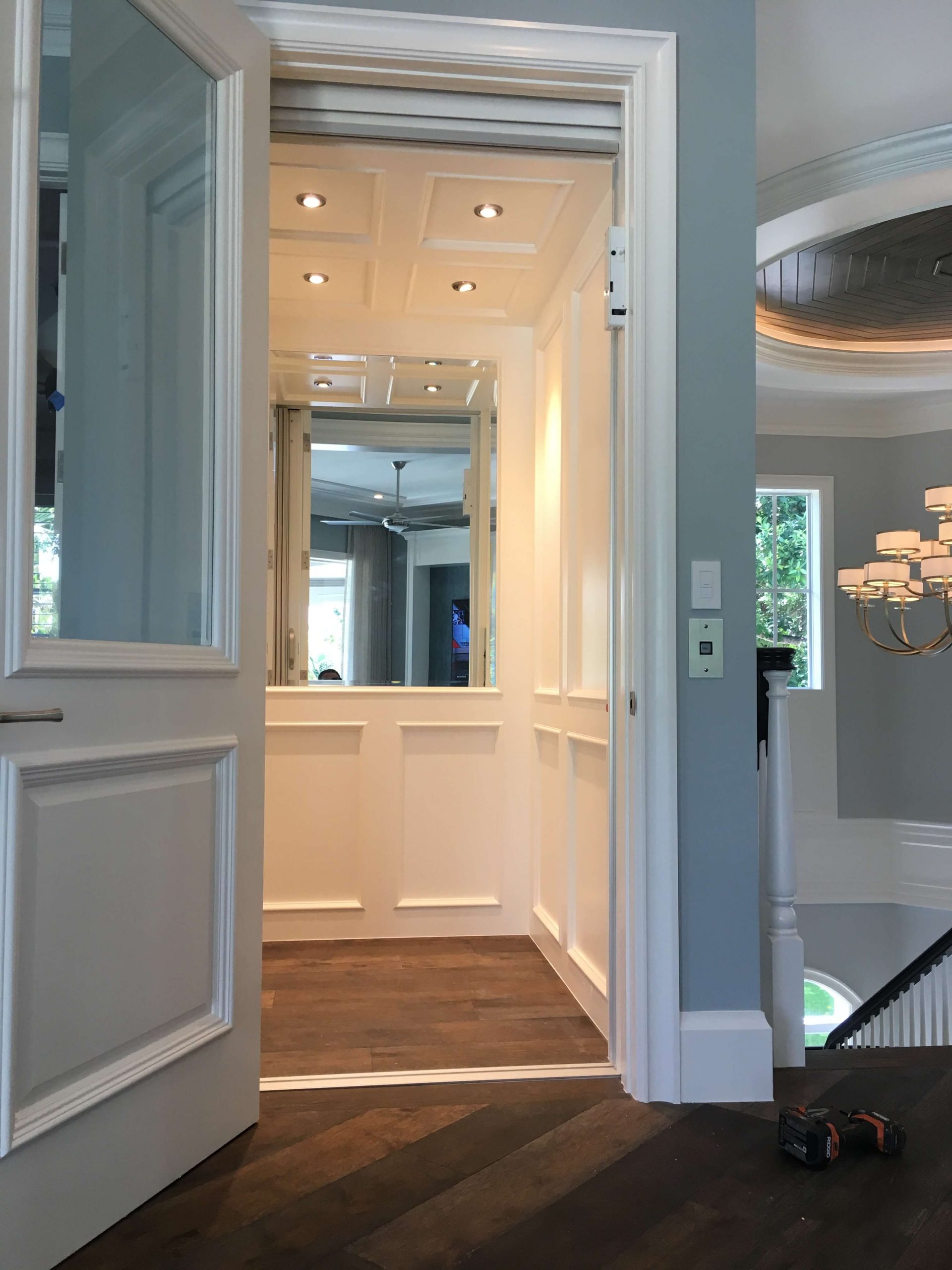When you are deciding to enhance the appearance of your home, one factor to think about is installing a residential elevator. It is becoming more of an essential accessory rather than a luxury item, especially with the aging population. The convenience provided by the elevators is unmatchable, as most homes are multi-story homes. Rise Above Elevators is the leading expert at residential elevators and can help with this luxury item.
Having the ability to access their entire home without the help will build up the confidence in senior citizens. Children will be able to safely go to different floors in a home without the fear of tripping and falling down the stairs. One of the most important benefits of having an elevator in your home is the ease of transporting heavy furniture and other accessories without much difficulty, depending on the type of elevator you choose.
However, when you considering having a residential elevator installed, you need to take certain factors into consideration.
1. Types Of Elevator On The Market
When you decide on installing the residential elevator, you must do some market research on the various types of elevators. There are several models of residential elevators available in the market that making a final choice may be a daunting task.
- The hydraulic model is more like traditional models using pistons and cables.
- The pneumatic elevators use of the air pressure changes for moving the elevator cab.
- The electric or counterweight elevator is a widely used system. It uses strong counterweights to keep the elevator suspended within the shaft.
- Roped or cable driven elevators have remained as the most popular. Cable elevators are seen in commercial and residential buildings.
When it comes to elevators there is a type to meet everyone’s needs and budget.
2. Budget
As we have previously mentioned in other articles, you need to set a budget and stick with it. Working with the experts at Rise Above Elevator, they will be able to go over all the nuances when it comes to elevator installation and elevator costs.
There are a plethora of choices for residential elevators costing in a ranging from reasonable to expensive, you will want to make sure you stick within your price quote, especially if you have a very strict budget. Going ham on upgrades, aesthetics and customization may burn your budget and not serve the purpose. Give priority to your needs rather than the price and sophistication.
3. Installation
When you are speaking with Rise Above Elevators regarding the installation of your home elevator, you need to consider all the aspects of the installation. Depending on the style elevator that you select the installation process could that days to weeks and might require more permits and contractors.
Hydraulic elevators involve a meticulous installation procedure. This type of elevator requires a pit that has to be dug in order to install the piston and cylinder and so on. Most likely if this is in an existing home there will need to be a complete remodel the space in your home.
On the other hand, pneumatic elevators can be installed without much of constructional changes. These types do not require a pit, piston and cylinders and no additional machine room.
The Machine Room
The machine room is where the functional components of the elevator that make the elevator work, will be installed. This is a separate room that will normally contain the control box, hydraulic tank, or drum motor and cables. A separate machine room typically requires a 30” wide x 36” deep or about 1,080 square feet, working space in front of the controller.
Certain elevators that do not require a machine room; these elevators are often referred to as machine-room-less (MRL) elevators. If you use an MRL elevator, the motor and controller will be mounted inside the elevator shaft, typically at the top of the hoistway.
Distance
Depending on the type of elevator you are selecting will determine the distance the elevator will be able to cover. This will decide the model and its usability in your home.
Hydraulic lifts are more popular for taller buildings like skyscrapers.
However, if you need just a distance of four stories then you can opt for the vacuum model.
Weight
The next factor that you will need to consider is the weight-bearing capacity of the elevator. It includes passenger weight, articles or wheelchair and so on.
Hydraulic elevators have a much higher weight-bearing capacity. Whereas pneumatic vacuum elevators can carry only up to 450 pounds.
Size Of The Elevator Car
The next aspect to consider is the size of the interiors of the elevator cab. You may want to install an elevator in a smaller home and in those cases, there may be family members who need to transport a wheelchair, scooter and likewise. In that case, it is better to opt for hydraulic as it has a much wider interior space and a larger cab based on square feet.
The vacuum platform or a pneumatic lift does not have much space on the interiors and might not meet the needs of someone who is physically challenged.
4. Appearance
You will want to make sure that you pick an elevator that can match your home décor. Hydraulic elevators are usually a bigger elevator and will occupy more space. It also requires separate room for the power unit. You may have to plan in advance to accommodate the same.
On the other hand, a pneumatic elevator is more of an open kind and can be fixed on the exterior walls. However, pneumatic elevators do not have the ability to be extremely personalized.
Consideration
When you are considering installing a home elevator there is a multitude of factors to consider. Unfortunately, without the knowledge, you might feel directionless. The team at Rise Above Elevator offers consultations to see if a residential elevator is right for you and your family. Contact us today to see how we can make your life more convenient.



